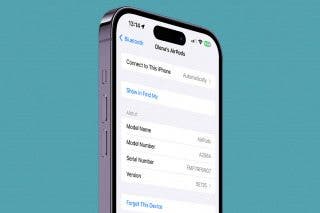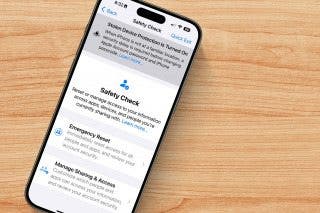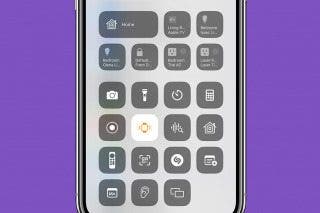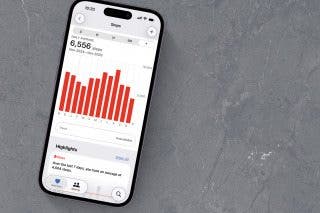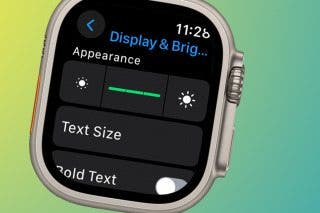Saved by the Apple Watch: Stories from Our Readers


I frequently call my Apple devices lifesavers. I would miss 99 percent of my appointments without the help of my iPhone alarms, but it may be a bit of an exaggeration to say I would die without my HomePod. There was no hyperbole needed for many of you who wrote in with stories of when your Apple devices saved the day! Once again, you came through with some amazing tales of your iPhones, Apple Watches, and AirTags coming to your rescue. I will reproduce several of them here, edited for space and clarity.
Like any good dramatist, I know the value of rising action, so let’s warm up with some lower-stakes stories before we get into life and death. After all, your Apple devices saving the day isn’t just something that happens in crises. It can be an everyday occurrence, like this story from Bob illustrates:
“My wife and I put AirTags in our cars, luggage, wallet, purse, and keys. My wallet fell out of my back pocket at a theater once, and I didn’t realize it until I got home. I used Find My and it located my wallet at the theater. Whew! That would have been a disaster.”
-Bob Z.
AirTags are a fairly recent addition to the Apple device family, but they’ve made a big difference to those of us prone to misplacing our belongings. You may have read news stories of airlines claiming passengers’ luggage was lost, only for the passengers to track down their suitcases themselves with the help of their AirTags. Cliff’s story below may be slightly less flashy (no big airline villain here), but his AirTag was no less useful to him:
“I dropped my car at a repair shop about two miles from my house. It was a pretty chilly day, but I had decided to just walk home and get a ride back the next day to pick the car up when it was finished.
I checked in, did the paperwork, and took off walking toward home. My iPhone and Apple Watch alerted me about two minutes later that I had left my keys behind. I had handed the key fob for the car to the repair guy, but I had inadvertently left my keychain with my house key in the car. Thankfully, the keys had an AirTag attached. I walked back to the shop, retrieved them from my car, and walked home.
Had I not gotten that alert, I would have walked the 2.3 miles and arrived home with no way to get into my locked house. I would have had to call a locksmith or perhaps wait a couple of hours until my wife drove home and opened the house for me. It was about 35 degrees Fahrenheit. It would have impacted my income, too: I do telehealth from home and had meetings scheduled that might have needed to be canceled.
So, there you go. The Apple ecosystem saves the day.”
-Cliff H.
With its plethora of health and safety features, like fall detection, an ECG app, and more, it was no surprise to me that most of your stories featured the Apple Watch. (Thank you for that: with your stories in my arsenal, maybe I can finally convince my parents that Apple Watches are worth it!) Here are some of my favorites:
“My wife and I write trail guides in conjunction with Texas Parks and Wildlife.
Four years ago, we were working on a guide for Franklin Mountains State Park. It’s the largest urban state park in the country and is in El Paso, Texas. To put a guide together we hike every trail multiple times, in both directions, and then combine trails into hikes, then hike those in both directions to see which best highlights the scenery, geology, etc. Yes, we hike a lot.
We often hike multiple times in a day. After a morning hike I felt unusually tired (bonked) and my Apple Watch Series 3 gave me an AFib (atrial fibrillation) alert. I didn’t even know my watch did this. I ignored the first instance, not really understanding what the issue was. It happened again two days later.
Back in Austin, my doctor sent me to a cardiologist the next day. I had an ablation a week later. Wow! The Apple watch made a significant contribution to my health and wellbeing.
I’ve had an Apple Watch (now Ultra) on my wrist ever since. There’s so much the watch can do from a health perspective as well as assist in our guide development”
-Robert F.
While Robert’s background making trail guides is certainly unique, the rest of his story is anything but. Many of you wrote in about receiving potentially lifesaving AFib alerts from your Apple Watches:
“I bought myself an Apple Watch. After using it for several months, the watch began to notify me that I was experiencing atrial fibrillation and if not diagnosed I should see a doctor ASAP. Having an appointment in a few weeks, I waited to ask my physician. She immediately did an EKG, came back into the room and said she had called the hospital and they were waiting for me. After three days in the hospital, I was referred to a cardiologist and received a procedure to correct the fibrillation. I may have been saved from a stroke or heart attack. A few months later, my Apple Watch indicated an above normal pulse, which required an ablation.
No indication of AFib from my watch since my heart procedures.”
-Anonymous
“Last year I began chemo treatment for Classic Hodgkin’s Lymphoma. The reaction to chemo treatments varies by each person. I was in my second treatment, when I decided to take a nap. My Apple Watch “woke me” in the middle of my nap with a warning that my heart rate was high. I checked it out and my heart rate was over 150 beats a minute. I called the chemo hotline, and they suggested I get to the ER immediately. Upon arrival at the ER my heart rate was approaching 200 and I had gone into AFib. With the proper treatments they were able to stabilize me and get things under control. As a result of this episode, they changed my “chemo cocktail” and I did not have any further incidents. As of October 2020, I am now cancer-free!”
-Fritz Jacobi
Congratulations, Fritz! We’re so happy to hear you’re cancer-free and that your Apple Watch was there for you when you needed it most. For many of you, your experiences with these health features have made you Apple Watch devotees.
“My experience started with back surgery that resulted in not taking my blood thinner for seven days. My Apple Watch told me my heart rate was over 120. I called 911 and was transported to the hospital, where they discovered I had blood clots in my lungs. I was in for two days taking shots.
I had the first version of the watch so decided to upgrade to the newest version that I wear every day.”
-Karen B.
For some of our readers, their Apple Watches helped confirm worries they had, even when their doctors weren’t initially concerned.
“During the first wave of COVID shut-downs, medicine moved to Zoom. I had a very bad cough for weeks, so my doctor who talked to me on Zoom prescribed antibiotics without a culture, checking my blood-oxygen level, or listening to my chest. This was medicine by guesswork. A friend reminded me that my Apple Watch could check my blood O2. I tested it and found my O2 was 79 percent [editor’s note: normal blood-oxygen levels are between 95-100 percent]. I had an infection that was not responding to antibiotics. I told the doctor what the reading was, and she told me to go to the ER. I think that saved my life.”
-Jay F.
Many of you were impressed with your Apple Watch’s safety features even before you needed them in a real crisis.
“I was dog sitting my daughter’s Lab when they were on their honeymoon. On a walk, he pulled and I was dragged on the ground. My Apple Watch asked me if I needed assistance! After taking inventory of myself, I realized I was fine and I selected NO. A minute later it asked if I was sure and I selected yes. It made me feel so protected and secure.”
-Beverly K.
It’s good to know your device is there for you, even if you don’t need its help immediately. But it becomes downright lifesaving when you do need it.
“I’d been sitting in the backyard watching my pups play and enjoying a fine day. When it was time to go in, I went up a couple of steps to the back door. As I twisted my body to allow the storm door to fully open, my pups ran inside. I began to step up to the entrance when I felt my right leg break. I immediately fell to the side of the steps and landed on my back in immediate pain. No one would be home for several hours, and our large yard is cloaked in trees and bushes with no easy way for anyone to see. When I recovered my breath, I tried screaming as loud as I could, to no avail.
I heard my watch making sounds and saw that it had detected a fall, and since I hadn’t responded to their query, it was calling 911. Not sure how reliable that would be, I struggled to work my iPhone from my pocket, open it, and dial 911. I told the person who answered what had happened. All went smoothly when the EMTs arrived, and they got me, moaning, onto a stretcher and into the ambulance. I’ll always be grateful that I had these devices that day. And I’m even more careful to always have one or both on my person at all times.”
-L.H.
After reading all these harrowing stories, I’m so glad everyone who contributed is here to tell them! Last year, Apple introduced many new health and safety features for the iPhone and Apple Watch, including Crash Detection and Emergency SOS via satellite. In the future, we’re likely to only hear more stories of these technological rescues. What a great excuse to never be parted from your devices!

August Garry
August Garry is an Associate Editor for iPhone Life. Formerly of Gartner and Software Advice, they have six years of experience writing about technology for everyday users, specializing in iPhones, HomePods, and Apple TV. As a former college writing instructor, they are passionate about effective, accessible communication, which is perhaps why they love helping readers master the strongest communication tools they have available: their iPhones. They have a degree in Russian Literature and Language from Reed College.
When they’re not writing for iPhone Life, they’re reading about maritime disasters, writing fiction, rock climbing, or walking their adorable dog, Moosh.
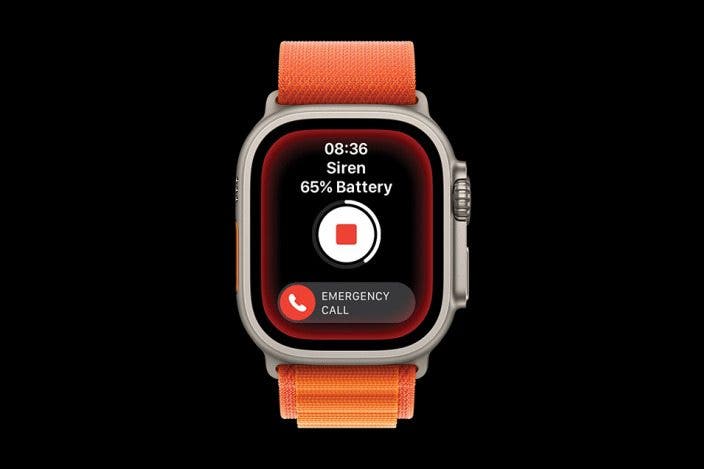

 Olena Kagui
Olena Kagui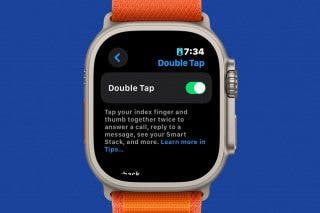
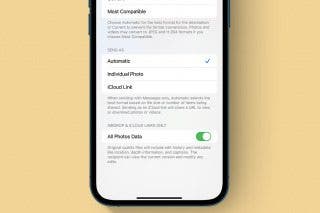

 Leanne Hays
Leanne Hays
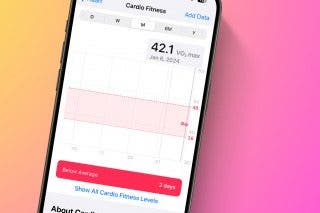
 Rhett Intriago
Rhett Intriago
 Rachel Needell
Rachel Needell
